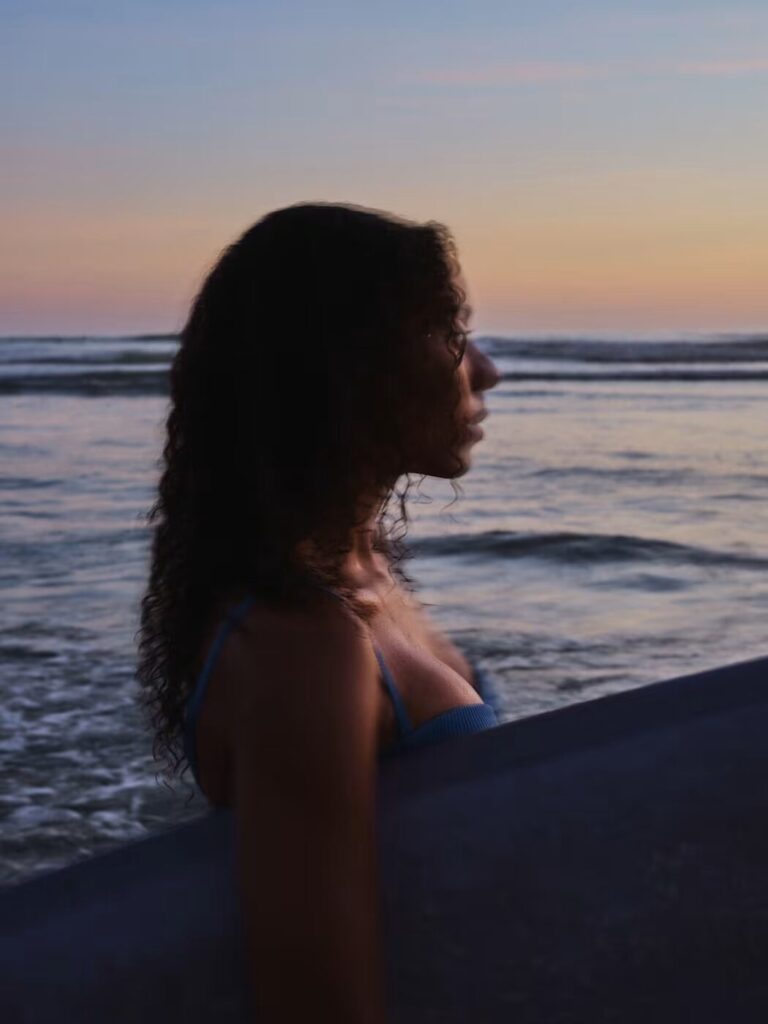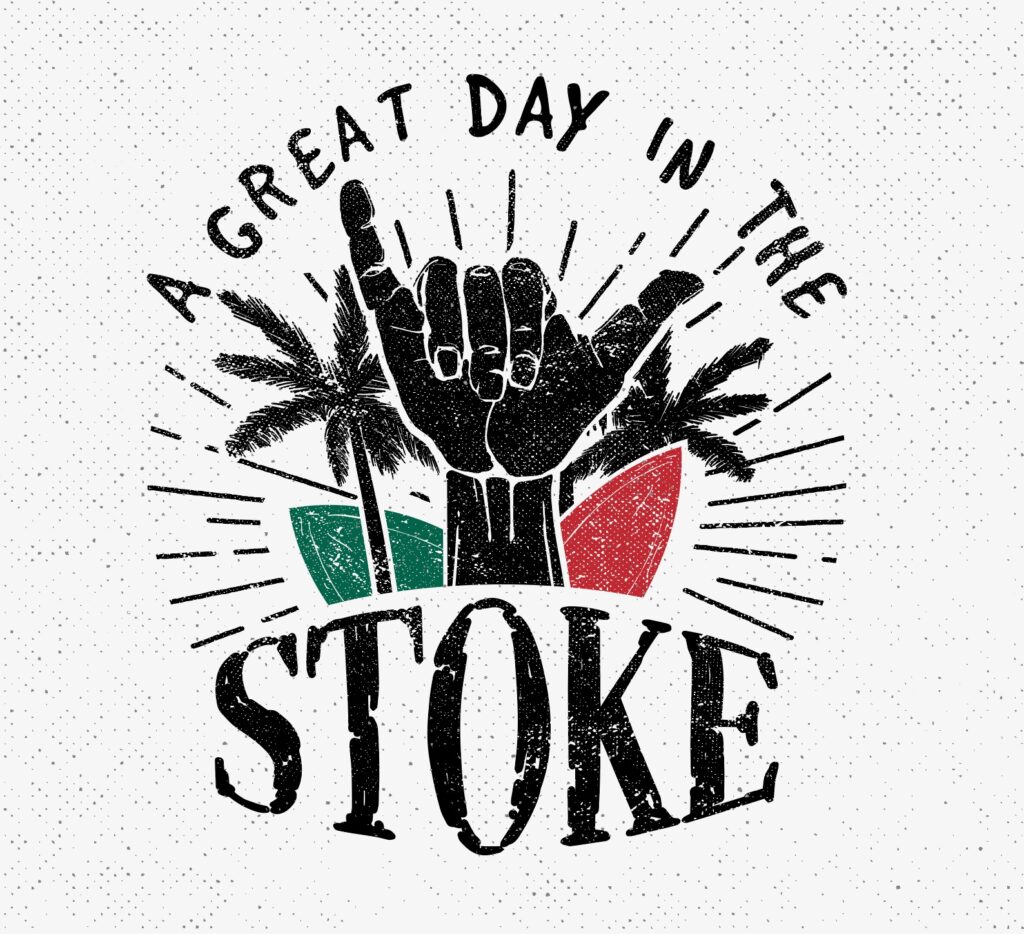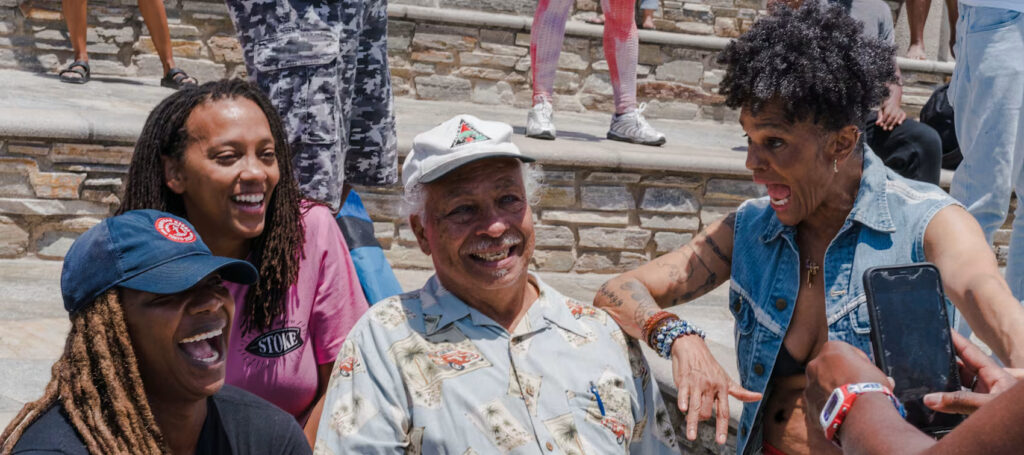In her own words, photographer Gabriella Angotti-Jones discusses the cultural significance of the largest global gathering of black surfers.
I slammed the door on my truck, and laid my head back on my headrest, closing my eyes. I was overwhelmed with joy, hope, love. Relief.
For those who don’t know, I’m Black, and I grew up in southern Orange County in a place called Capistrano Beach. It’s a part of 3 successive towns–including Dana Point and San Clemente–that have played a pinnacle role in surf history, creating the sport into what we know it as today.
Aside from my younger sister Emilia, I was probably one of the only Black girls in the area that did ocean sports like outrigging and surfing. As a grom, I never saw people that looked like me in the water, and tangentially stopped surfing because I felt like I didn’t belong (I talk more about it in my photo book project on Black Girl and Nonbinary surfers, which is coming out this summer. But back to me being overwhelmed).

As I pulled out of the packed Huntington Beach parking lot, I replayed memories from the morning–visuals that I never thought I would experience. Images of Black people, under the Huntington Beach pier, surfing and having fun.
A Great Day in the Stoke, founded By Nathan Fluellen, was created to be the largest gathering of Black surfers, complete with a surf competition and surf lessons for those willing to try the sport. There was also beach yoga and wetsuit repairs.
Quite literally, it was a global event. Nique Miller, Billabong team rider, came out from Hawaii. Cherif Fall, also a Billabong team rider, came from Senegal. Farmata Dia, Elisabeth Young, Autumn Kitchens and Cynthia Hicks traveled from Rockaway, New York City for a quick weekend trip.

The vibes were immaculate. The Huntington Beach Boardriders club helped run the competition, generously offering their years of experience to us. Danielle Black Lyons, Roxy team rider, Sierra Brown, Divinity Gaines, Jade Curley, Nique Miller and Mary Ellen Oliveira absolutely dominated overhead sets, riding their boards with power and grace. Spectators from the beach and pier watched in awe, cheering, seeing us for what we can do when given the opportunity. Black and brown people from all over SoCal, some who had been curious about surfing but had never tried it, became inspired to sign up for lessons and fell in love.
“Something I never thought would never happen, happened, which was feeling like a group of Black people were outnumbering everyone on the beach.” -Gabriella Angotti-Jones
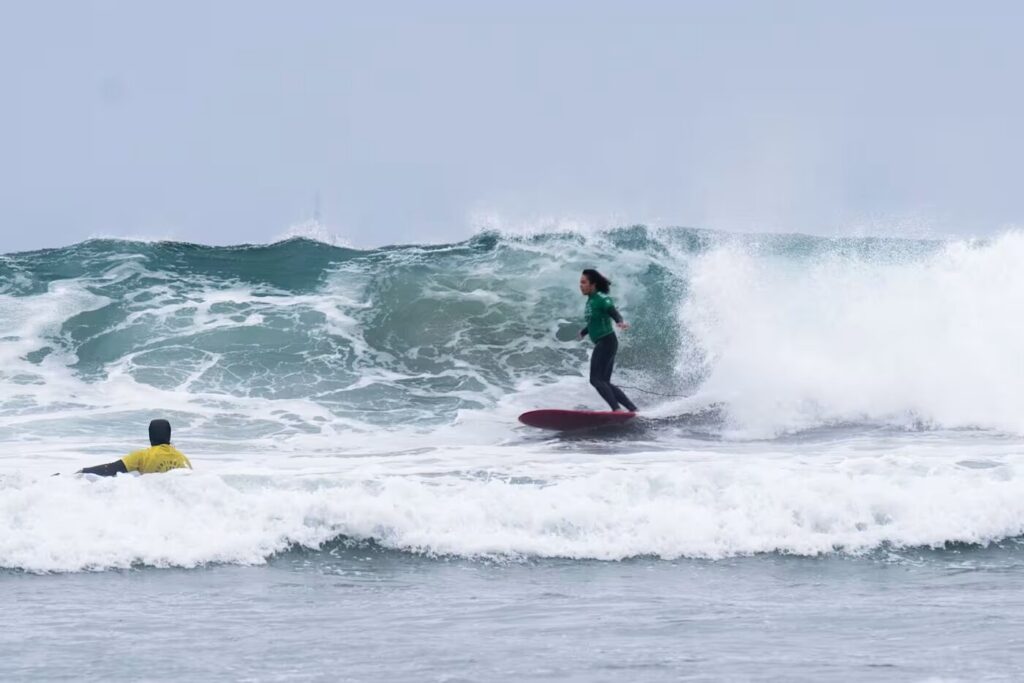
There was one young woman in particular named Journey who recently started surfing a month ago. Journey had never thought about surfing before she tried it during the Culture Club South Bay program at Bruce’s Beach. I remember meeting her after seeing her absolutely send it on a decently-sized closeout.
Journey was amazed seeing the greater community, and seeing women surfing, saying her favorite was a local shortboarder, Mary Ellen Oliveira. “Women are put in lower places but they’re just as powerful as anyone else,” she said.

All of this was swirling in my head. What is it like seeing everything you’ve dreamed of materialize? It’s surreal, it almost doesn’t make sense. Something I never thought would never happen, happened, which was feeling like a group of Black people were outnumbering everyone on the beach. A place where we were once relegated from, a place where our elders once had to drive for hours to get to. A place, specifically to Huntington Beach, that was centralized in California’s far right and neo nazi movement in 2020 and 2021.
Fluellen wanted to host the event in Huntington not because of the city’s political history, but because of its cultural significance to surfing. He remembers attending the U.S. Open of Surfing and thinking how cool it would be to have Black surfers showcase their talent on world class waves.
In organizing the event, Fluellen was supported by the city. “While people had the experience of the previous bad reputation–or what people say about Huntington–I was getting to know a different side or a set of people that were very welcoming.”
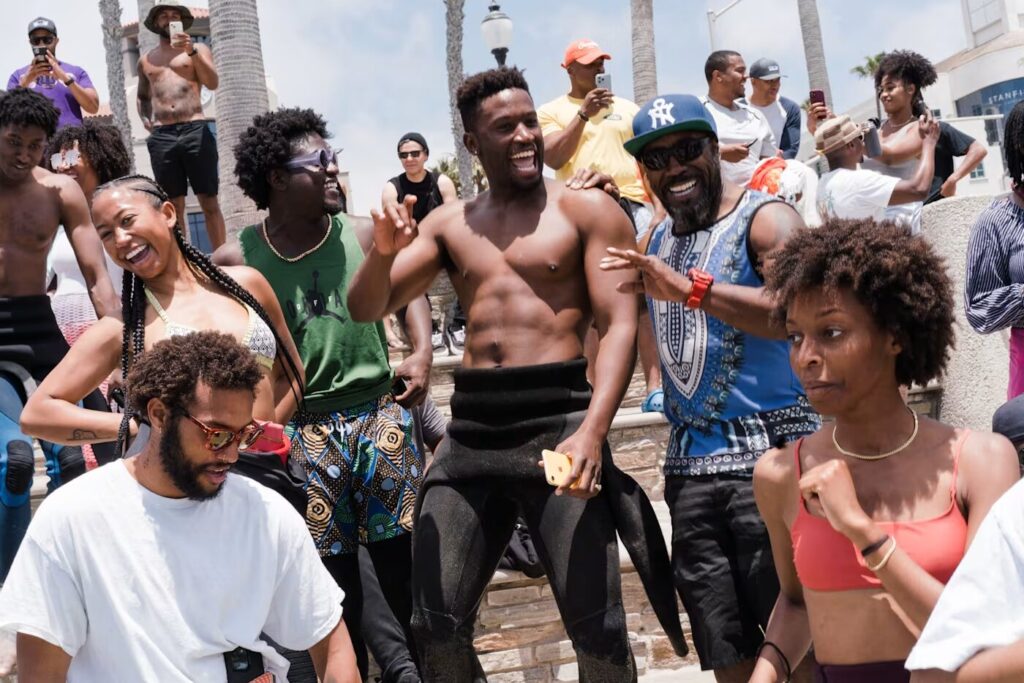
“The energy that we have is a revolution. And we’re all equal parts of putting forward and paying it forward, and being a part of that revolution.” -Sharon Schaffer
As I roamed, watching my friends send it on overhead sets, groms chatting with their idols, and insta friends hug for the first time, I realized that Saturday was more than just a beach day for us. It was an invitation to the SoCal beach community–and the world–to join us. We exist. We don’t want to exist separately. Yeah, a lot of us are beginners. But many of us have been doing this for years, often on our own, or with a few friends.
Sharon Schaffer, who was formally recognized on Saturday, is one of those people. She’s the first professional Black female surfer, and has shared the stoke with many young women over the years, channeling the love and grace of the ocean into her surf journey.
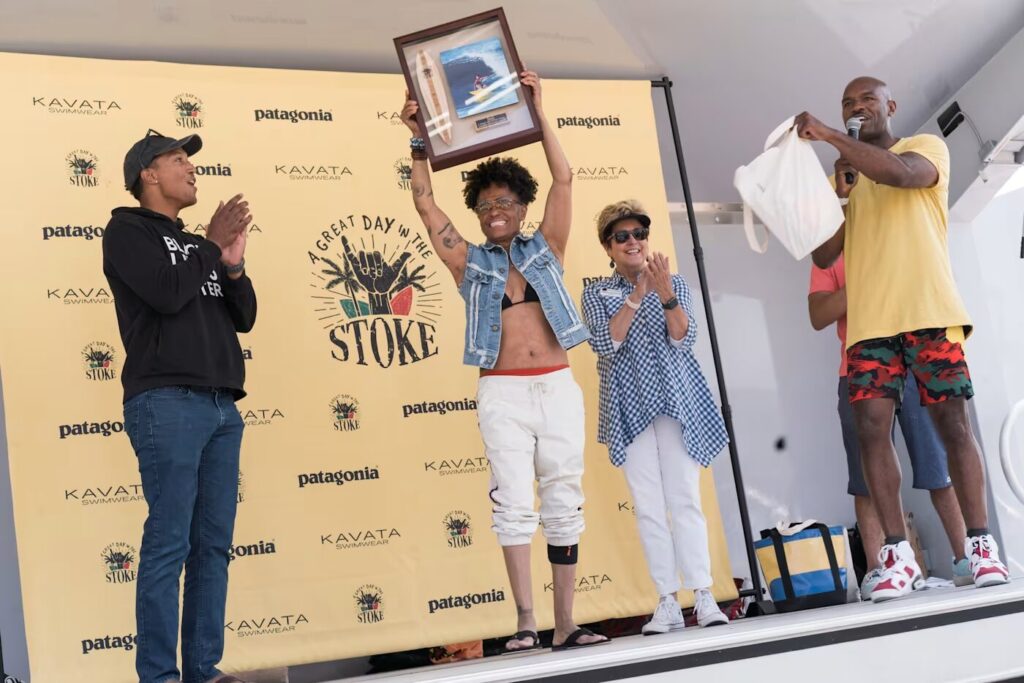
“The energy that we have is a revolution. And we’re all equal parts of putting forward and paying it forward, and being a part of that revolution,” she said after being recognized for her contributions to surf history.
Tony Corley, who was also recognized, started the Black Surfers Association in 1975. He offered words of wisdom to us, as we embark on a new chapter of our story.
“Don’t let self ambition and money divide us. There is enough for all of us. Let us lift each other up, as a Black community. Now as a retired surfer, I’m gonna sit on the shores, and watch y’all tear it up.”
Never have we had a centralized community like this. This is history, sitting on the shoulders of Willa Bruce, Rosa Parks, hell, even Harriet Tubman, if we’re going there. To see it all come together–the OGs mixing with the young rippers, soul surfers and newbies, made me hopeful that I’m one of the last girls to be pushed away.
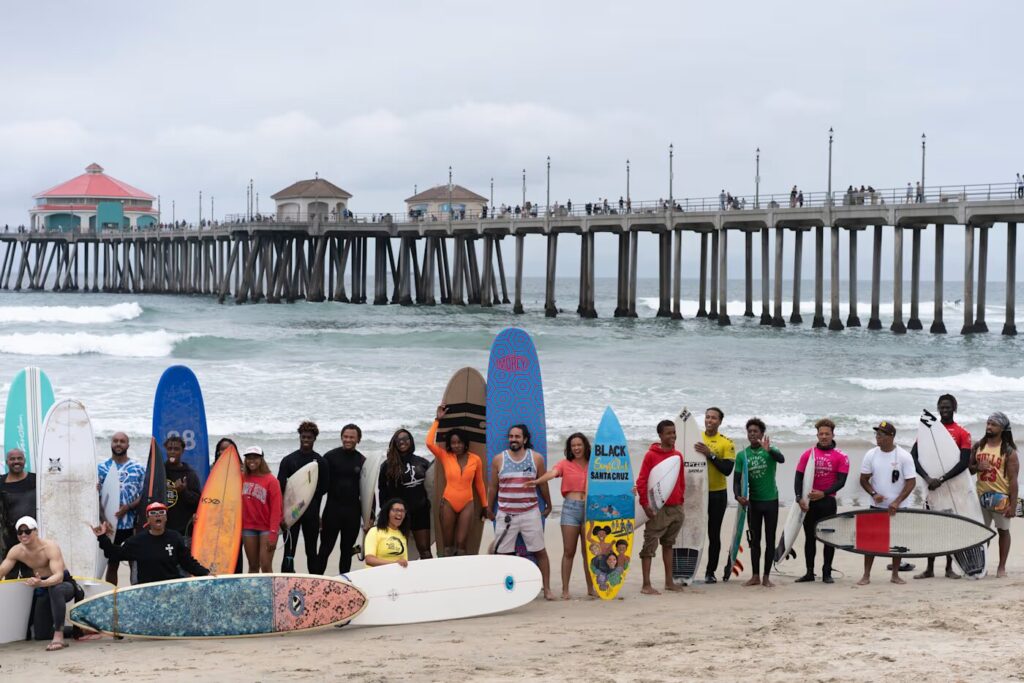
“I realized that Saturday was more than just a beach day for us. It was an invitation to the SoCal beach community–and the world–to join us. We exist. We don’t want to exist separately.” -Gabriella Angotti-Jones
With all this in mind heading back to my truck, I caught up with Journey and asked her what she thought.
“I feel like I want to come out here every chance that I can get all this summer, and I feel like I want to do a lot of surfing. Because I saw Sharon today, and she really inspired me, and the Culture Club really inspired me, and all this inspiration makes me feel like I could do anything.”
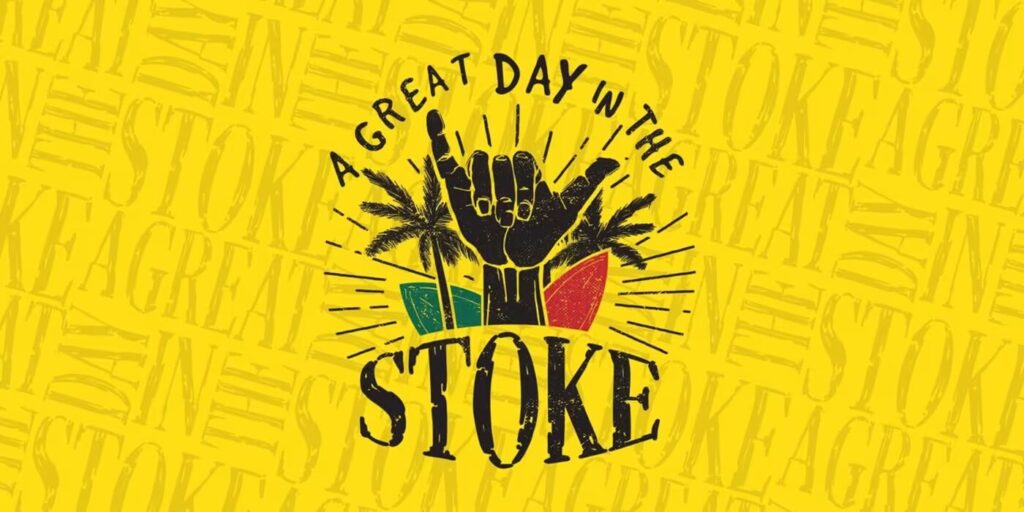
About the Author-Gabriella Angotti-Jones
Gabriella Angotti-Jones is a documentary photographer based in Los Angeles, CA. A former staff photographer at the Los Angeles Times, Gabriella uses her editorial background to inform her imagery, focusing on found light, intimate, storytelling moments and graphic compositions. Her documentary work focuses on the intersection of race, identity, and environmental justice. For the past three years, she has been working on a photo book on Black Girl and Nonbinary surfers, which will be availible to enjoy summer 2022.
